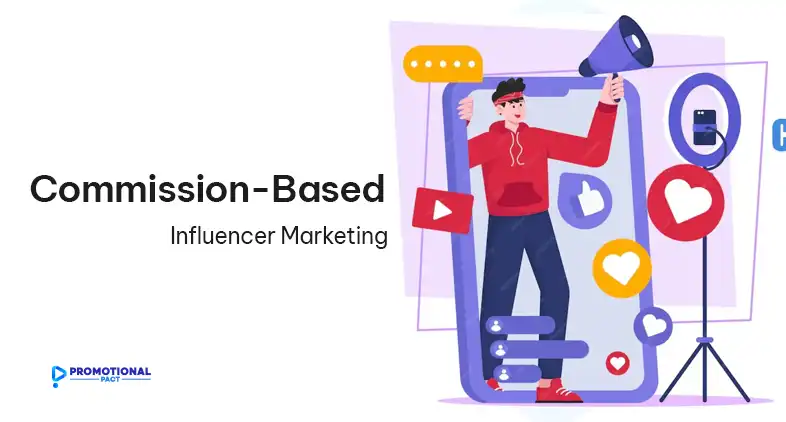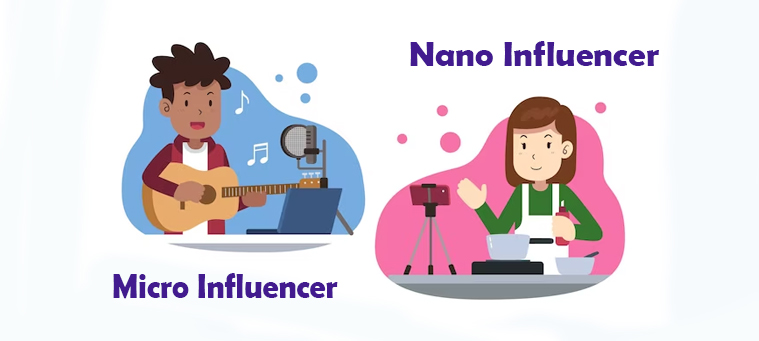
Commission-based influencer marketing, often referred to as influencer affiliate marketing, is reshaping how brands engage with audiences and generate tangible results. This model shifts the focus from traditional influencer campaigns that primarily aim for visibility to a performance-driven strategy that ties payouts directly to measurable outcomes like sales or leads. But what makes this model unique, and why should businesses consider it? Let’s explore.
What is Commission-Based Influencer Marketing?
Commission-based influencer marketing is a referral-driven strategy where influencers earn a commission for each predefined action their audience completes, such as making a purchase or signing up for a service. Unlike traditional influencer collaborations, which might involve flat fees or product exchanges, this model directly rewards performance metrics.
For instance, influencers might be paid in these ways:
- Pay-Per-Click (PPC): Earning a small fee for every click their audience generates toward the brand’s website.
- Cost Per Acquisition (CPA): Receiving a percentage or fixed amount for every sale or subscription driven by their unique link or promo code.
This structure is rooted in referral marketing, a method historically used to reward individuals for recommending products or services. As social media and e-commerce continue to thrive, this model has become increasingly relevant, particularly among younger generations like Gen Z, who rely on influencers for entertainment and purchasing advice.
Why is Commission-Based Influencer Marketing Gaining Popularity?
The rise of social commerce has highlighted the value of influencers who serve as trusted advisors to their followers. As businesses seek cost-effective and performance-oriented marketing solutions, commission-based influencer marketing stands out due to its tangible benefits:
- Targeting New Customers: Influencers provide brands access to unique audiences who trust their recommendations.
- Cost-Effectiveness: Businesses only pay for actual results, eliminating the financial risk of upfront fees for uncertain outcomes.
- Authenticity in Promotions: Since influencers earn based on performance, their recommendations tend to feel more genuine and aligned with their content.
- Increased Transparency and Accountability: This model fosters trust between brands and influencers by ensuring mutual focus on measurable success.
In a landscape where 81% of consumers trust influencer recommendations over branded content, commission-based marketing is proving to be a compelling strategy.
How Does Commission-Based Influencer Marketing Work?
At its core, commission-based influencer marketing is a collaborative process that aligns the goals of businesses and influencers. Here’s a closer look at how it functions:
The Mechanics
Brands partner with influencers, providing them with affiliate links or promo codes to track the sales or actions generated by their promotions. These tools allow businesses to:
- Monitor clicks, conversions, and sales with accuracy.
- Calculate commissions based on agreed rates.
- Evaluate campaign performance through analytics tools.
Influencers integrate these links or codes seamlessly into their content—whether through social media posts, blogs, or YouTube videos—making it easy for their audience to engage.
Real-World Examples of Success
Brands across industries have leveraged commission-based marketing to scale their efforts:
- Adobe: Partnered with design-focused influencers who shared affiliate links, driving subscriptions to their creative software. By targeting niche audiences, Adobe achieved higher conversion rates and brand loyalty.
- FlexFit: Focused on fitness influencers who incorporated promo codes in their workout videos, resulting in a 25% boost in sales within three months.
Such examples highlight the adaptability and success of this model when executed thoughtfully.
Running a Successful Campaign with Commission Based Influencer Marketing Model
Implementing a successful commission-based influencer marketing campaign requires careful planning, collaboration, and execution. Businesses should focus on the following steps to maximize impact:
Crafting a Detailed Brief
The cornerstone of any successful campaign is clear communication. Brands must provide influencers with comprehensive briefs that outline the campaign’s expectations. This includes:
- Campaign Goals: Clearly define objectives, such as increasing sales or growing email sign-ups.
- Deliverables: Specify the content format, posting schedule, and key messaging.
- Deadlines: Ensure influencers have sufficient time to create authentic, high-quality content.
A well-crafted brief eliminates confusion and fosters alignment between the brand and the influencer.
Encouraging Collaboration
While businesses have their goals, influencers understand their audience better than anyone else. Encourage them to infuse their creativity into the campaign. For example:
- Collaborate on content formats like tutorials, unboxings, or giveaways.
- Use influencer feedback to refine the messaging and improve relatability.
Providing Marketing Materials
Support influencers by equipping them with branding assets, product information, and promotional tools. This not only simplifies their workflow but ensures consistency in how the brand is represented across platforms.
Setting the Right Commission Rates
Determining appropriate commission rates is a delicate balance between ensuring profitability for the brand and incentivizing influencers effectively. Rates can vary widely based on the industry, product price, and campaign goals.
Common Commission Structures
- Flat-Rate Commissions: A fixed amount for each sale or lead, commonly used for services or subscriptions.
- Percentage-Based Commissions: A portion of the sale value, ranging from 5% to 30%, depending on the product category.
For example:
- Luxury brands like high-end watches might offer 10-15% per sale, as even one conversion can represent substantial revenue.
- Mass-market products like beauty items or gadgets often lean toward 20-30%, encouraging influencers to drive higher volume.
To remain competitive, businesses should analyze industry benchmarks and consider factors like customer acquisition cost (CAC) and influencer reach.
Incentives for High Performers
To motivate top-performing influencers, brands can introduce tiered commission structures or performance bonuses. For instance, an influencer who exceeds 50 sales in a month might qualify for a 5% bonus or a one-time reward. Such systems foster loyalty and encourage consistent effort.
Key Takeaways
Commission-based influencer marketing is a results-oriented strategy that aligns incentives for both brands and influencers. By focusing on performance metrics, businesses can build cost-effective campaigns that resonate with target audiences. While challenges exist, the right tools, planning, and partnerships can drive exceptional outcomes.
This model isn’t just a trend—it’s a reflection of the evolving digital economy, where trust, transparency, and measurable impact are paramount. Whether you’re a small business or a global brand, adopting commission-based influencer marketing could be the key to unlocking your next level of growth.
FAQs
How do brands ensure they’re paying fair commissions?
Brands can benchmark rates within their industry and adjust based on factors like product price, influencer engagement, and campaign objectives. Offering transparent terms and reviewing ROI helps maintain fairness.
Are commission-based campaigns suitable for small businesses?
Absolutely. Small businesses can benefit from this model by starting with micro-influencers who are cost-effective yet impactful in driving targeted results.
What industries benefit the most from commission-based influencer marketing?
E-commerce, beauty, fitness, and tech industries often see the greatest success due to their strong presence in influencer-driven spaces and high conversion potential.
How long should a commission-based campaign run?
Campaigns should ideally last 1-3 months to gather sufficient data and refine strategies. However, ongoing partnerships with high-performing influencers yield the best long-term results.

